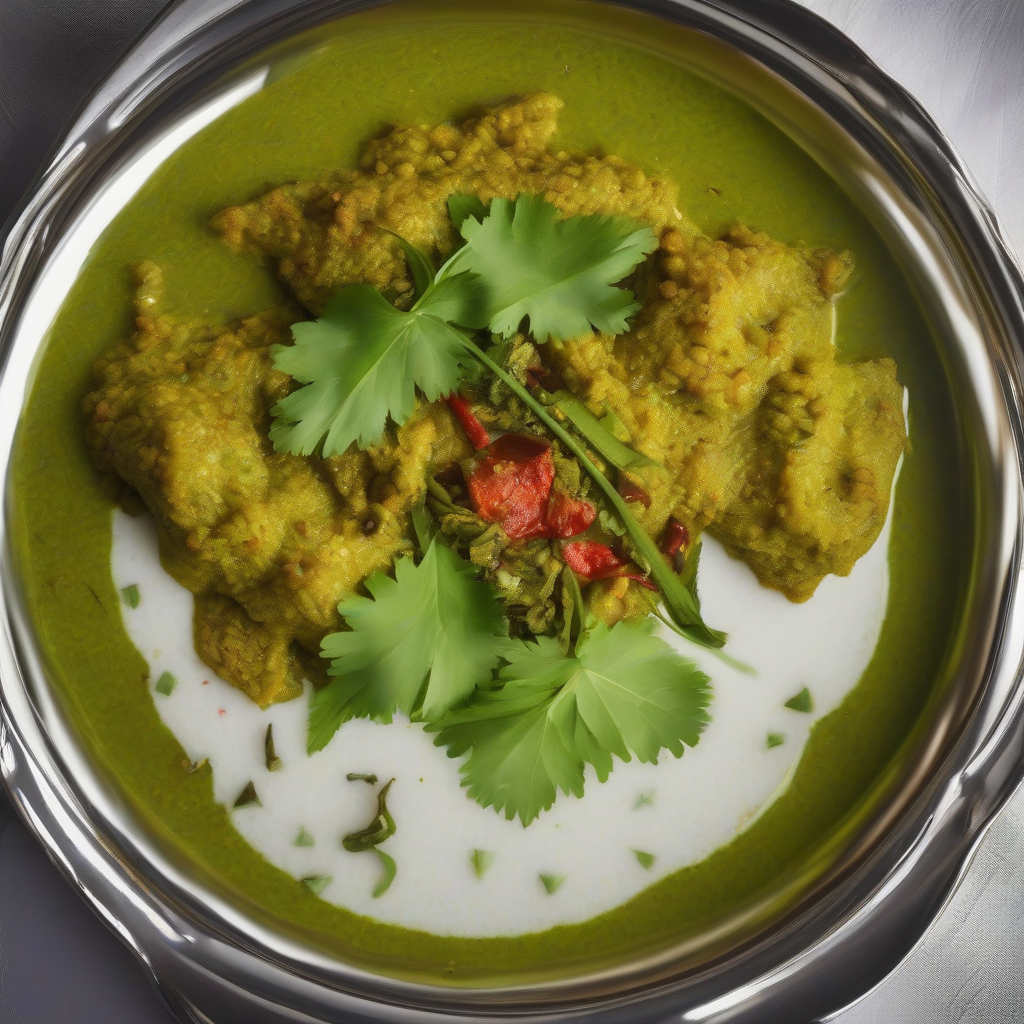Pachadi Pandemonium: A Zesty Delight from My Kitchen to Yours!
Namaste Dosto! Kem cho? Kem chho badha? (How are you all?) Chef Curry Do’pyaza here, ready to spice up your life with a dish that’s as vibrant as a Holi celebration and as comforting as a warm hug from your Amma! Today, we’re diving headfirst into the wonderful world of Pachadi!
Think of Pachadi as the Indian cousin of salsa, but with a tangy twist and a whole lot more personality. It’s a flavorful condiment that is both refreshing and stimulating. It’s the perfect accompaniment to your favorite South Indian meals, and trust me, once you try it, you’ll be hooked!
When Does Pachadi Party?
Pachadi isn’t just a dish; it’s a celebration! You’ll find it gracing the tables during joyous occasions like:
- Ugadi/Yugadi: The Telugu and Kannada New Year, where Pachadi represents the six tastes of life – sweet, sour, salty, bitter, spicy, and astringent.
- Onam: The vibrant harvest festival of Kerala, where it’s an essential part of the Onam Sadhya (grand feast).
- Weddings: No South Indian wedding is complete without a dazzling array of Pachadis to tantalize your taste buds.
- Everyday Meals: Because who needs a special occasion to enjoy something so delicious? It’s a great way to add some zest to a simple meal of rice and dal.
- Summer: Pachadi is a great way to use seasonal produce and enjoy a cool, refreshing dish during the hot summer months.
A Pinch of History
The history of Pachadi is as colorful and diverse as India itself. Each region boasts its own unique version, using locally sourced ingredients and time-honored techniques. It is believed to have originated in South India, where it has been a staple for centuries. It is also a great way to preserve seasonal fruits and vegetables. The name “Pachadi” is derived from the Tamil word “Pachai,” meaning “fresh” or “raw,” which reflects the dish’s emphasis on using fresh ingredients.
Let’s Get Cooking!
Preparation Time: 15 minutes
Cooking Time: 5 minutes (mostly for tempering)
Recipe: Cucumber Pachadi
Ingredients:
- 1 medium sized Kakdi (Cucumber), peeled, seeded, and finely chopped
- 1/2 cup Thayir (Yogurt), plain and preferably homemade
- 1-2 numbers of Pachai Milagai (Green Chillies), finely chopped (adjust to your spice level)
- 1/2 inch piece Inji (Ginger), grated
- 1 tablespoon Nariyal (Grated Coconut), fresh or desiccated
- 1/4 teaspoon Rai (Mustard Seeds)
- 1/4 teaspoon Urad Dal (Split Black Gram)
- 1 number of Sukhi Lal Mirch (Dry Red Chilli), broken into pieces
- 1 sprig Kari Patta (Curry Leaves)
- 1 tablespoon Tel (Cooking Oil)
- Salt to taste
- A pinch of Hing (Asafoetida)
Instructions:
- Prep the Cucumber: In a mixing bowl, add the finely chopped cucumber.
- Yogurt Power: Whisk the yogurt until it’s smooth and creamy. Add it to the cucumber.
- Spice it Up: Add the chopped green chilies, grated ginger, grated coconut, and salt to the cucumber-yogurt mixture. Mix everything together well. Taste and adjust the salt and spice levels as needed.
- Tempering Time! Heat the oil in a small pan or tadka pan over medium heat. Once the oil is hot, add the mustard seeds. Let them splutter for a few seconds.
- Dal Delight: Add the urad dal and let it turn golden brown.
- Chilli Charm: Add the broken dry red chili and curry leaves. Sauté for a few seconds until the curry leaves become crisp.
- Hing Hero: Add a pinch of hing (asafoetida) to the tempering. This adds a lovely aroma and aids digestion.
- Pour and Mix: Pour the hot tempering over the cucumber-yogurt mixture. Mix well.
- Chill Out: Let the Pachadi chill in the refrigerator for at least 30 minutes before serving. This allows the flavors to meld together beautifully.
Chef Curry’s Tips for Pachadi Perfection:
- Fresh is Best: Use the freshest ingredients possible for the best flavor.
- Yogurt Matters: Use thick, creamy yogurt. If your yogurt is too watery, drain it through a cheesecloth for a few hours.
- Spice Wisely: Adjust the amount of green chilies to your liking. Remember, you can always add more, but you can’t take it away!
- Tempering is Key: Don’t skip the tempering! It adds a wonderful aroma and flavor to the Pachadi.
- Chill Time: Chilling the Pachadi before serving allows the flavors to develop and blend together.
Pachadi Your Way: Different Cooking Methods
- Gas Stove: The traditional method, perfect for tempering and quick cooking.
- Induction Stove: Works just as well as a gas stove, offering precise temperature control.
- Microwave: You can lightly cook the cucumber in the microwave for a minute or two if you prefer a softer texture.
- Air Fryer: Some people like to lightly roast the cucumber in the air fryer for a slightly smoky flavor. (Just a few minutes!)
Nutritional Information (Approximate, per serving):
- Calories: 80-100
- Protein: 3-4g
- Fat: 5-7g
- Carbohydrates: 5-7g
Serving Suggestions:
- Serve chilled as a side dish with rice, sambar, and rasam.
- Enjoy it as a dip with dosas, idlis, or vadas.
- Use it as a refreshing accompaniment to grilled meats or vegetables.
- Spread it on sandwiches or wraps for a flavorful twist.
Time to Try It!
So there you have it, my friends! A simple, delicious, and incredibly versatile Pachadi recipe that’s sure to become a family favorite. I urge you to try this recipe at home. Share it with your friends and family. Let me know how it turns out in the comments below! Until next time, happy cooking!
